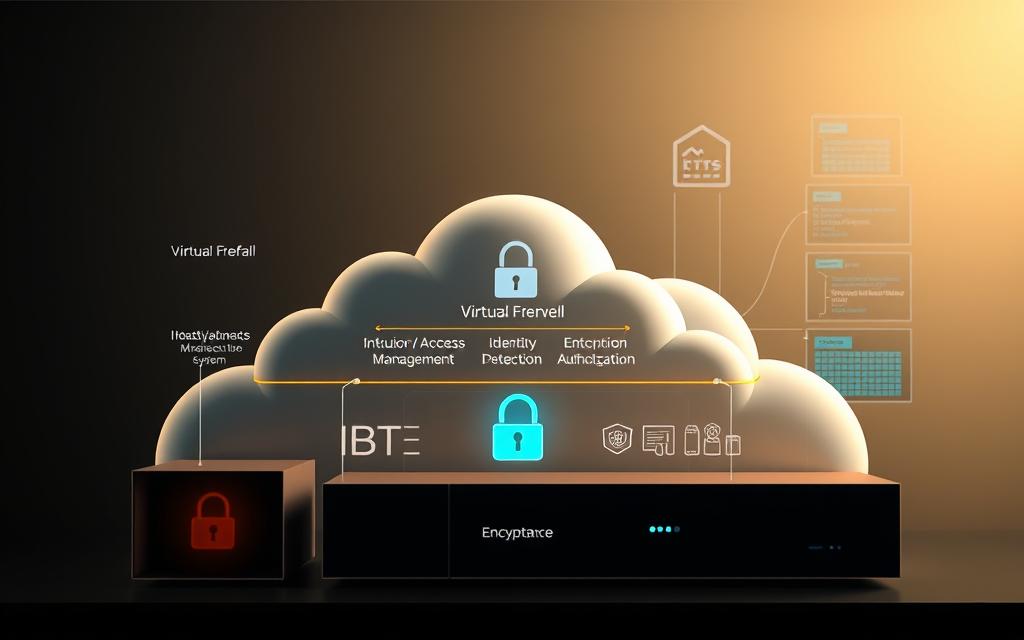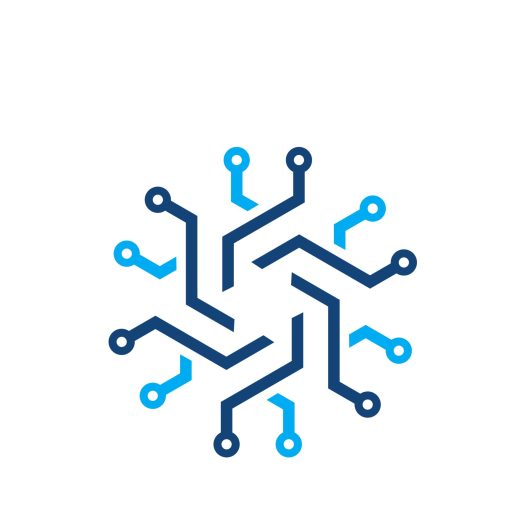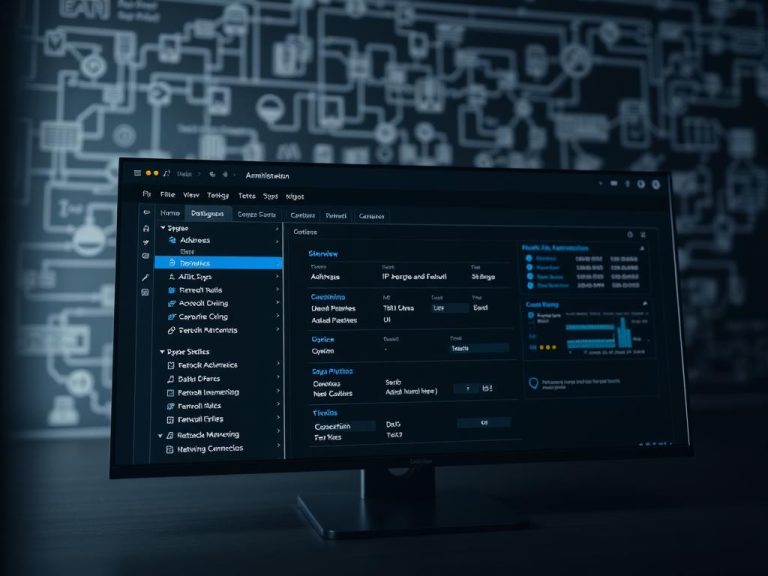Cloud Security Architecture: How to Design and Implement a Secure Cloud Framework
As businesses increasingly migrate their operations to the cloud, ensuring the security of their data and applications becomes paramount. A robust cloud security architecture serves as the foundation for protecting cloud-based resources from vulnerabilities and unauthorized access.
Just as a secure building requires multiple layers of protection, a secure cloud environment necessitates a multi-layered security architecture. This involves implementing various components that work together to create a robust defense system against cyber threats, safeguarding data and promoting compliance.
In this article, we will explore the fundamental concepts of cloud security and its architecture, including the shared responsibility model between cloud service providers and customers. By understanding these elements, you’ll be equipped to design and implement effective security measures in your cloud environment.
Understanding Cloud Security Architecture
As organizations increasingly migrate to cloud environments, understanding cloud security architecture becomes paramount. This involves grasping the fundamental principles that guide the implementation of security controls and practices within cloud computing environments.
What is Cloud Security Architecture?
Cloud security architecture refers to the comprehensive framework of security controls, practices, and solutions designed to protect cloud-based resources, applications, and data from potential threats and vulnerabilities. It encompasses the strategic planning and deployment of security measures, including identity access management (IAM), network security, data encryption, threat detection and prevention, and regulatory compliance. Effective cloud security architecture is crucial for safeguarding against data breaches and ensuring the continuity of business operations.
The Importance of a Secure Cloud Framework
A secure cloud framework is essential for organizations as it helps prevent data breaches, ensures regulatory compliance, and maintains business continuity in increasingly complex cloud environments. By understanding and implementing a robust cloud security architecture, organizations can significantly enhance their security posture. This involves addressing the unique challenges of cloud computing, such as shared resources and dynamic scaling, to create a foundation for a robust security posture that evolves with changing threats.
Key Principles of Cloud Security Architecture
A robust cloud security architecture is founded on several key principles that ensure the protection of sensitive data. These principles are designed to safeguard cloud security and maintain the trust of users.
Confidentiality, Integrity, and Availability (CIA Triad)
The CIA Triad forms the cornerstone of cloud security architecture, providing a framework for protecting sensitive data, ensuring data remains unaltered, and maintaining system accessibility. Confidentiality measures prevent unauthorized access to sensitive information through encryption, access controls, and data classification.
- Confidentiality ensures that only authorized individuals can view protected data.
- Integrity focuses on maintaining the accuracy and reliability of data by implementing mechanisms that detect and prevent unauthorized modifications.
- Availability ensures systems remain operational and accessible to legitimate users when needed.

Defense in Depth Strategy
The Defense in Depth strategy implements multiple layers of security controls throughout the cloud environment, creating redundant protective measures that collectively strengthen the overall security posture.
Principle of Least Privilege
The Principle of Least Privilege restricts access rights to the minimum necessary for users to perform their job functions, reducing the potential attack surface and limiting the impact of compromised accounts.
| Principle | Description | Benefits |
|---|---|---|
| Confidentiality | Protects sensitive data from unauthorized access | Ensures data privacy |
| Integrity | Maintains data accuracy and reliability | Prevents data tampering |
| Availability | Ensures system accessibility | Maintains business continuity |
The Shared Responsibility Model in Cloud Security
Understanding the shared responsibility model is essential for effective cloud security, as it clarifies the roles of cloud service providers and customers in securing cloud environments. The shared responsibility model splits security responsibilities between the cloud service provider and the customer, ensuring a comprehensive approach to cloud security.
The cloud provider typically handles the security of the infrastructure, including physical hardware, virtualization layers, and networking. Meanwhile, cloud users are responsible for securing their data, applications, and configurations within the cloud. This division of labor is crucial for maintaining a secure cloud environment.
IaaS Responsibility Distribution
In Infrastructure as a Service (IaaS) environments, providers secure the physical infrastructure, networking, and virtualization. Customers, on the other hand, are responsible for operating systems, applications, data, and access controls. This includes configuring firewalls, managing user access, and ensuring data encryption.
PaaS Responsibility Distribution
In Platform as a Service (PaaS) environments, providers manage the runtime environment and middleware, shifting more responsibility to them. Customers remain accountable for application security, data, and access management, including configuring application settings and controlling data access.
SaaS Responsibility Distribution
In Software as a Service (SaaS) environments, providers secure the entire application stack, leaving customers primarily responsible for data classification, user access controls, and endpoint security. This includes managing user permissions, monitoring data access, and ensuring compliance with security policies.
The shared responsibility model clearly delineates security obligations between cloud service providers and customers, varying based on the service model (IaaS, PaaS, or SaaS) being utilized. Understanding these responsibility boundaries is crucial for implementing effective cloud security architecture and preventing security gaps that could lead to vulnerabilities or compliance issues.
- The Shared Responsibility Model clearly delineates security obligations between cloud service providers and customers, varying based on the service model (IaaS, PaaS, or SaaS) being utilized.
- In IaaS environments, providers secure the physical infrastructure, while customers are responsible for operating systems, applications, and data.
- In PaaS, providers manage the runtime environment, and customers are accountable for application security and data.
- In SaaS, providers secure the application stack, and customers manage user access controls and data classification.
Essential Components of Cloud Security Architecture
To achieve robust cloud security, it’s crucial to understand and implement the essential components of cloud security architecture. These components work together to provide comprehensive protection for cloud-based resources and data.
Identity and Access Management (IAM)
Identity and Access Management (IAM) serves as the foundation of cloud security architecture by controlling who can access cloud resources and what actions they can perform. IAM implements role-based access controls and the principle of least privilege, ensuring that users have only the necessary permissions to perform their tasks. Multi-factor authentication adds an essential security layer by requiring multiple verification methods before granting access.
Data Protection and Encryption
Data protection strategies include encryption for both data at rest and in transit, data loss prevention (DLP) tools, and secure key management to ensure sensitive information remains protected throughout its lifecycle. Encryption is a critical component, as it renders data unreadable to unauthorized parties.
Network Security Controls
Network security controls establish boundaries around cloud resources through firewalls, intrusion detection systems, and secure network configurations that monitor and filter traffic to prevent unauthorized access. Zero Trust Architecture enhances security by requiring verification for everyone attempting to access resources, regardless of their location or network connection.
Monitoring and Threat Detection
Continuous monitoring and threat detection systems provide real-time visibility into cloud environments, using advanced analytics to identify suspicious activities and potential security incidents before they cause damage. These systems utilize SIEM tools and automated alerts to ensure prompt response to threats.
| Component | Description | Key Features |
|---|---|---|
| Identity and Access Management (IAM) | Controls access to cloud resources | Role-based access control, multi-factor authentication |
| Data Protection and Encryption | Protects sensitive data | Encryption, data loss prevention tools |
| Network Security Controls | Secures cloud networks | Firewalls, intrusion detection systems, Zero Trust Architecture |
| Monitoring and Threat Detection | Identifies potential security incidents | SIEM tools, automated alerts |
Top Cloud Security Threats to Address
As organizations increasingly migrate to cloud environments, they face a myriad of security threats that can compromise their data and infrastructure. These threats can have significant consequences, including data breaches, financial loss, and reputational damage.
Misconfigured Cloud Settings
Misconfigured cloud settings represent one of the most common security vulnerabilities. Improper setup of storage buckets, security groups, or access controls can inadvertently expose sensitive data to unauthorized parties. For instance, a misconfigured Amazon S3 bucket can lead to the exposure of sensitive data, highlighting the need for robust configuration management.
Unauthorized Access and Account Hijacking
Unauthorized access and account hijacking are significant threats to cloud security. These threats often occur through phishing attacks, credential theft, or brute force attempts targeting cloud service accounts. Implementing strong authentication mechanisms, such as multi-factor authentication, can help mitigate these risks.

Insecure APIs and Interfaces
Insecure APIs and interfaces present significant risks as they serve as the primary connection points between cloud services and applications. Proper authentication, encryption, and access controls are necessary to prevent exploitation. Organizations should ensure that their APIs are designed with security in mind to minimize vulnerabilities.
Insider Threats and Ransomware
Insider threats, whether malicious or accidental, pose unique challenges for cloud security. Ransomware attacks are also increasingly targeting cloud environments, encrypting critical data and demanding payment for decryption keys. Implementing comprehensive monitoring and least privilege principles can help mitigate these risks.
| Cloud Security Threat | Description | Mitigation Strategy |
|---|---|---|
| Misconfigured Cloud Settings | Improper setup of storage buckets, security groups, or access controls | Robust configuration management, regular audits |
| Unauthorized Access | Phishing attacks, credential theft, brute force attempts | Multi-factor authentication, strong password policies |
| Insecure APIs | Poorly designed APIs, lack of authentication and encryption | Secure API design, authentication, and encryption |
How to Design a Secure Cloud Architecture
To design a secure cloud architecture, organizations must first understand their risk landscape and security requirements. This involves a thorough analysis of the organization’s current security posture, including potential vulnerabilities and threats.
Conducting a Comprehensive Risk Assessment
A comprehensive risk assessment is crucial for identifying valuable assets, potential vulnerabilities, and specific threats facing the organization’s cloud environment. This process should evaluate both technical and non-technical factors, including regulatory requirements and business impact analysis, to establish appropriate security controls.
The risk assessment should consider sensitive information stored in vulnerable cloud storage, staff with weak passwords, and APIs without security checks. By understanding these risks, organizations can develop targeted security measures to mitigate them.
Selecting the Right Cloud Service Model
Selecting the right cloud service model (IaaS, PaaS, or SaaS) is crucial for security architecture design, as each model presents different security considerations and responsibility distributions between the provider and customer. Organizations should evaluate cloud service providers based on their security capabilities, compliance certifications, transparency, and ability to meet specific security requirements.
Comparison of Cloud Service Models:
| Service Model | Security Responsibility | Key Considerations |
|---|---|---|
| IaaS | Customer manages most security aspects | Infrastructure security, data protection |
| PaaS | Shared responsibility between provider and customer | Application security, data encryption |
| SaaS | Provider manages most security aspects | Data privacy, access controls |
Implementing Defense Layers
Implementing defense layers involves creating multiple security controls that work together to protect cloud resources, including identity management, encryption, network segmentation, and monitoring tools. The defense-in-depth approach ensures that if one security control fails, others remain in place to protect critical assets.
Key security tools include IAM & Access Controls (MFA, roles), Encryption (AES-256, TLS1.3), and Network Security (firewalls, Zero Trust). By layering these defenses, organizations can create a comprehensive security posture that addresses various attack vectors.

Implementing Your Cloud Security Framework
Implementing a robust cloud security framework is crucial for protecting your organization’s data and applications in the cloud. This involves several key steps and strategies to ensure comprehensive security.
Access Control Implementation
Access control is a fundamental aspect of cloud security. It begins with establishing a comprehensive identity and access management (IAM) strategy that includes role-based access control (RBAC), just-in-time access provisioning, and regular access reviews. Multi-factor authentication (MFA) should be deployed across all cloud services to provide an additional layer of security beyond passwords. For more information on cloud architecture fundamentals, visit https://technetworks.ca/cloud-architecture-fundamentals/.
- Implement role-based access control to limit user privileges to the minimum required.
- Use multi-factor authentication to significantly reduce the risk of unauthorized access.
Data Encryption Strategies
Data encryption is critical for protecting sensitive information in the cloud. Encryption strategies must address both data at rest and data in transit. Industry-standard encryption algorithms like AES-256 for data at rest and TLS 1.3 for data in transit should be used. Effective key management is also crucial, requiring secure generation, storage, rotation, and revocation processes.

Network Security Configuration
Network security configuration involves implementing various controls to manage data flow between cloud resources. This includes setting up virtual private networks (VPNs), security groups, and network access control lists. Microsegmentation techniques can be applied to divide cloud networks into secure zones, limiting lateral movement in case of a breach. Automated security tools should be integrated to ensure consistent application of security policies and rapid detection of potential vulnerabilities.
- Implement virtual private networks and security groups to control data flow.
- Use microsegmentation to limit lateral movement in case of a security breach.
Monitoring and Maintaining Cloud Security
Effective cloud security requires continuous monitoring and maintenance to stay ahead of emerging threats. As cloud environments are dynamic and constantly evolving, a robust monitoring system is essential to identify potential security incidents in real-time.

Continuous Security Monitoring
Continuous security monitoring forms the backbone of an effective cloud security architecture, providing real-time visibility into the environment. Security Information and Event Management (SIEM) tools like Splunk or Datadog collect and analyze log data to identify patterns that might indicate security threats. Automated alerting systems notify security teams of suspicious activities, ensuring prompt action.
Incident Response Planning
Incident response planning is crucial for cloud environments, requiring detailed procedures for containing, eradicating, and recovering from security incidents. A well-planned incident response strategy minimizes business impact and ensures compliance with regulatory requirements. As cybersecurity expert, John Smith, once said,
“The key to effective incident response is preparation, not reaction.”
Regular Security Assessments
Regular security assessments, including vulnerability scanning, penetration testing, and compliance audits, help identify weaknesses in cloud security before they can be exploited. Cloud Security Posture Management (CSPM) tools continuously assess cloud configurations against best practices and compliance requirements, automatically detecting and remediating misconfigurations.
By implementing these measures, organizations can maintain a robust cloud security posture, protecting their assets from evolving threats and ensuring the integrity of their cloud environment.
Cloud Security Architecture Best Practices
A robust cloud security architecture involves integrating automation, compliance measures, and security training to protect cloud resources. This comprehensive approach ensures that cloud environments are secure, compliant, and resilient against cyber threats.
Automation and Integration
Automation is a cornerstone of effective cloud security architecture, enabling consistent policy enforcement and rapid threat detection. Security automation tools should be integrated with development and operations workflows (DevSecOps) to ensure security is built into applications and infrastructure from the start.
Compliance and Governance
Compliance and governance frameworks provide structure for cloud security architecture, helping organizations meet regulatory requirements. Organizations should implement a formal governance structure that defines roles, responsibilities, and decision-making processes for cloud security.
Security Training and Awareness
Security training and awareness programs are essential for all users with access to cloud resources. Technical teams require specialized cloud security training to understand cloud-specific threats and security controls.
| Best Practice | Description | Benefit |
|---|---|---|
| Automation | Integrate security automation tools with DevSecOps | Consistent policy enforcement and rapid threat detection |
| Compliance and Governance | Implement formal governance structure | Meet regulatory requirements and ensure accountability |
| Security Training | Provide regular security awareness training | Prevent phishing and social engineering attacks |

Conclusion
In conclusion, a robust cloud security architecture is pivotal for safeguarding modern businesses against an ever-evolving threat landscape. This involves a multi-layered approach, incorporating identity and access management, data protection, and continuous monitoring. By following key principles such as Defense in Depth and the CIA Triad, organizations can design a system prepared for today’s threats. A well-designed cloud security architecture balances robust protection with business agility, enabling organizations to leverage cloud benefits while maintaining security controls. This not only enhances security but also improves compliance and operational efficiency.
As cloud adoption accelerates, investing in a comprehensive cloud security framework becomes critical for protecting sensitive data and preserving customer trust.
FAQ
What is the primary goal of a cloud security framework?
The primary goal of a cloud security framework is to protect sensitive data and ensure the integrity, availability, and confidentiality of cloud-based resources by implementing a robust identity and access management (IAM) system and other security controls.
How does a defense in depth strategy enhance cloud security?
A defense in depth strategy enhances cloud security by implementing multiple layers of security controls, making it more difficult for attackers to breach the system, and ensuring that a single vulnerability does not compromise the entire infrastructure.
What is the role of multi-factor authentication in cloud security?
Multi-factor authentication plays a crucial role in cloud security by verifying the identity of users and ensuring that only authorized users have access to sensitive data and resources, thereby preventing unauthorized access and reducing the risk of data breaches.
How can organizations ensure the security of their cloud-based data?
Organizations can ensure the security of their cloud-based data by implementing robust data encryption strategies, both in transit and at rest, and by selecting a reputable cloud service provider that adheres to industry-recognized compliance standards.
What are some common cloud security threats that organizations should be aware of?
Some common cloud security threats that organizations should be aware of include misconfigured cloud settings, insecure APIs and interfaces, insider threats, and ransomware attacks, which can be mitigated by implementing a robust cloud security framework and conducting regular security assessments.
How can organizations ensure compliance with regulatory requirements in the cloud?
Organizations can ensure compliance with regulatory requirements in the cloud by selecting a cloud service provider that adheres to industry-recognized compliance standards, implementing robust governance policies, and conducting regular security monitoring and incident response planning.















